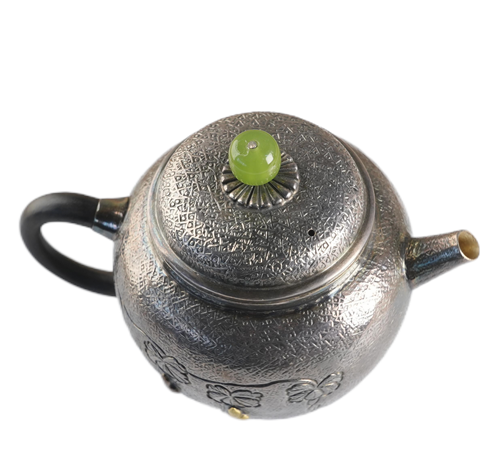It is well known that China is the origin of tea culture and has a long history of tea drinking. China is also known for producing exquisite ceramics, with Jingdezhen renowned as the “Porcelain Capital of the World”. With the accumulation of two millennia-old cultures, ceramic teaware emerged. The emergence of ceramic teaware can not only enhance tea taste needs but also enables the fusion and development of tea culture and ceramic culture.
Ceramic tea sets come in a wide variety of and can be divided into two categories based on the material: porcelain tea sets and pottery tea sets. The main types of porcelain tea sets include celadon tea set, white porcelain tea set, black porcelain tea set and colored porcelain tea set. The most famous pottery tea set is Yixing Zisha purple clay tea set, and other well-known pottery tea sets include the Nixing pottery teapot and the Jianshui purple pottery teapot.
一 Porcelain Tea Sets
Porcelain tea sets are generally made of raw materials such as kaolin, quartz, feldspar and its primary color is white. They are widely adored for their whiteness and transparency, fine texture and cool touch. Porcelain tea sets are usually more suitable for making light teas like white tea, green tea, and oolong tea.
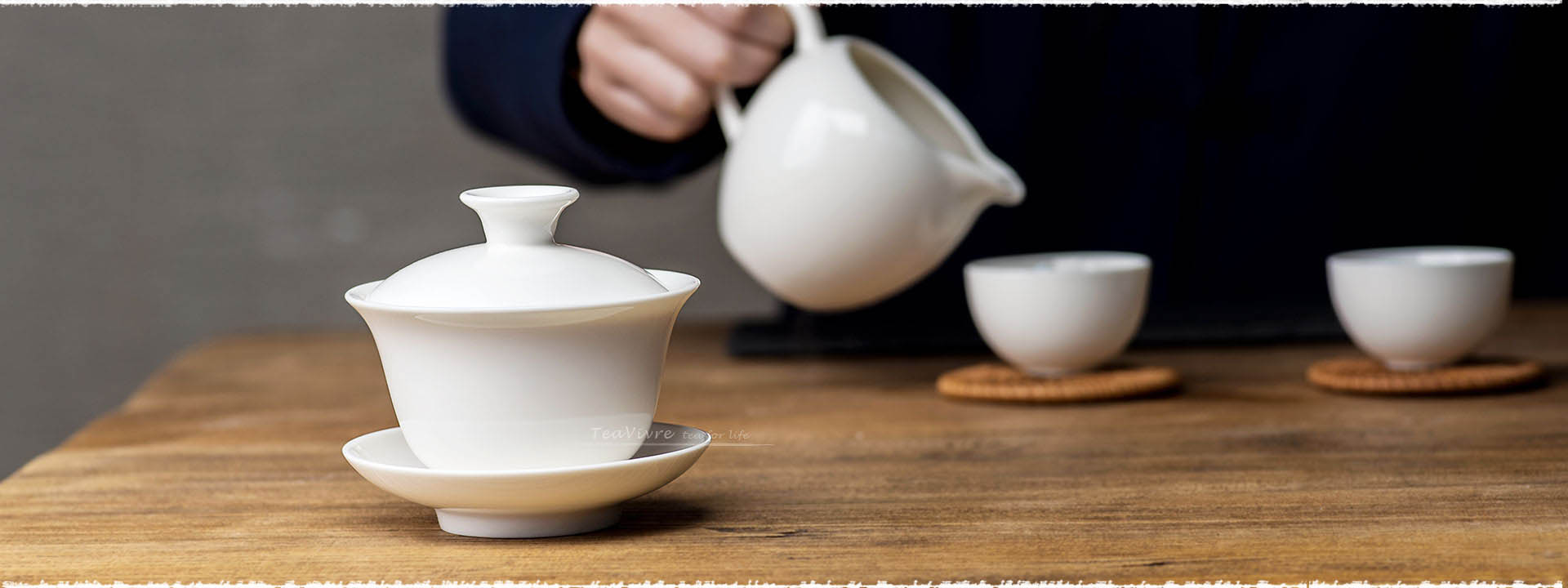
二 Pottery Tea Sets
Pottery tea sets, on the other hand, are made of raw materials such as clay and pottery, usually in red, black, purple color and have a rough, thick texture. Pottery tea sets have good air permeability and are suitable for making strong teas like oolong tea, black tea, and Pu’er tea, which are believed to benefit from being brewed in porous clay vessels that can absorb some of the tea’s flavor and aroma.
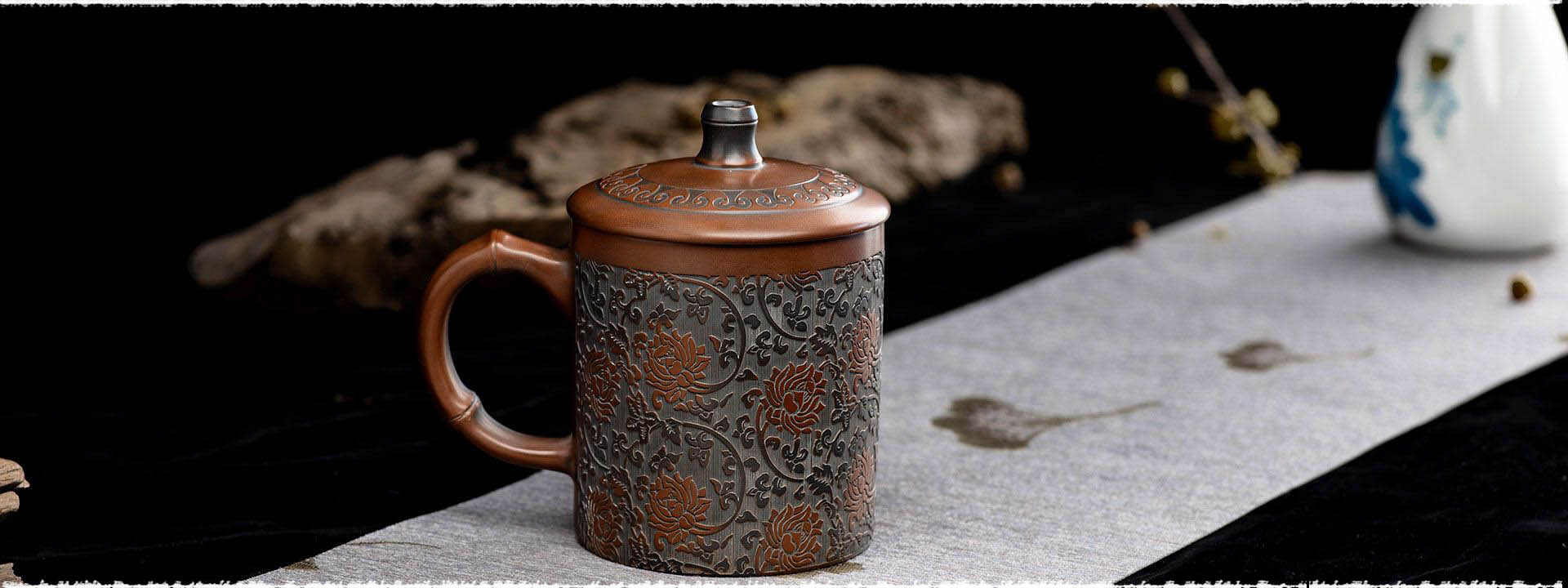
Both porcelain and pottery tea sets can be great options for enjoying tea, depending on personal preference and the type of tea being brewed. In addition, there are other types of tea set made from other materials such as iron tea sets, bamboo tea sets, silver teapots and glass tea sets. Each kind of tea set has its unique characteristics.
Producing Area of Porcelain Teaware
There’re various regions that produce porcelain teaware in China, some of the most famous and well-known production areas include Jingdezhen, Dehua, and Chaozhou.
Jingdezhen, located in Jiangxi province, is the most well-known region for making porcelain teaware. With a history dating back over 1,700 years, Jingdezhen is known as the “Porcelain Capital” of China, and its teaware is renowned for its superior quality, fine craftsmanship, and aesthetic appeal.
Chaozhou, located in Guangdong province, is famous for its ceramic teaware, including porcelain teapots, tea cups, and tea sets. Teaware in Chaozhou is known for its distinctive and lovely patterns, which often feature intricate carving, painting, and other decorative techniques.
Longquan, located in the Zhejiang province of China and is known for producing celadon porcelain, which is distinguished by its greenish-blue color. Celadon porcelain from Longquan is renowned for both its beauty and durability.
Overall, China has a rich tradition of porcelain production, and there are many regions throughout the country that are known for producing high-quality teaware.
Types of Porcelain Teaware
1. Celadon Porcelain Teapot
The celadon tea set has a thin body and firm texture, beautiful shape, full glaze layer, jade texture, and jade-like color. When used to brew green tea, it will be easier to reveal the beauty of the tea liquor, creating a beautiful and harmonious presentation. The main origin of celadon tea sets is in Zhejiang province, and Zhejiang Longquan Ge Kiln is one of the five famous kilns that produced celadon tea sets during the Song Dynasty. The kiln was known for producing high-quality celadon ceramics, including porcelain teapots, tea bowls, tea cups, and other types of tea sets. The Longquan celadon tea sets are highly valued for their beauty and durability, and they continue to be popular among tea enthusiasts around the world today. The Longquan celadon tea sets are known for their distinctive greenish-blue color, which is achieved through a unique firing process that involves a reduction atmosphere in the kiln. The celadon glaze also has a subtle crackled appearance, which adds to the beauty of the tea set.
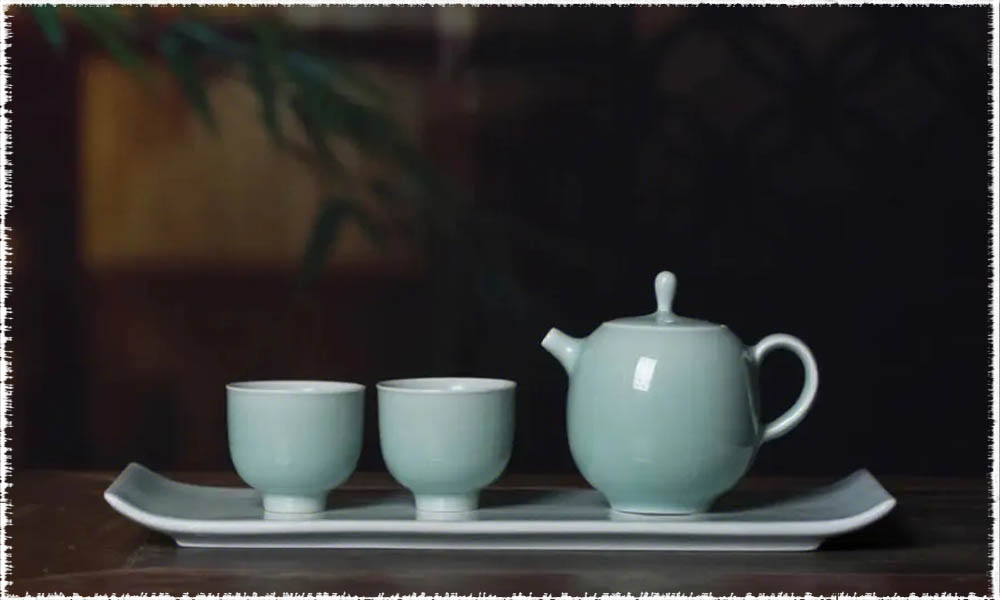
2. White Porcelain Teapot
White porcelain tea sets are renowned for their solid, translucent foundation. Tea can be presented in a lovely and elegant way thanks to the white porcelain, which can effectively reflect the color of the tea liquor. White porcelain tea sets are suitable for brewing a variety of teas because to their moderate heat transfer and heat preservation performance. Xing Kiln in Hebei province produced white porcelain utensils as early as the Tang Dynasty, and they were highly prized and widely used. In the Yuan Dynasty, white porcelain tea sets produced in Jingdezhen, Jiangxi province were sold abroad. Today, white porcelain tea sets are still highly valued for their exquisite shapes and elegant decorations. The outer walls of the tea sets are often painted with paintings of mountains and rivers, flowers and plants in all four seasons, birds and animals, or embellished with calligraphy.
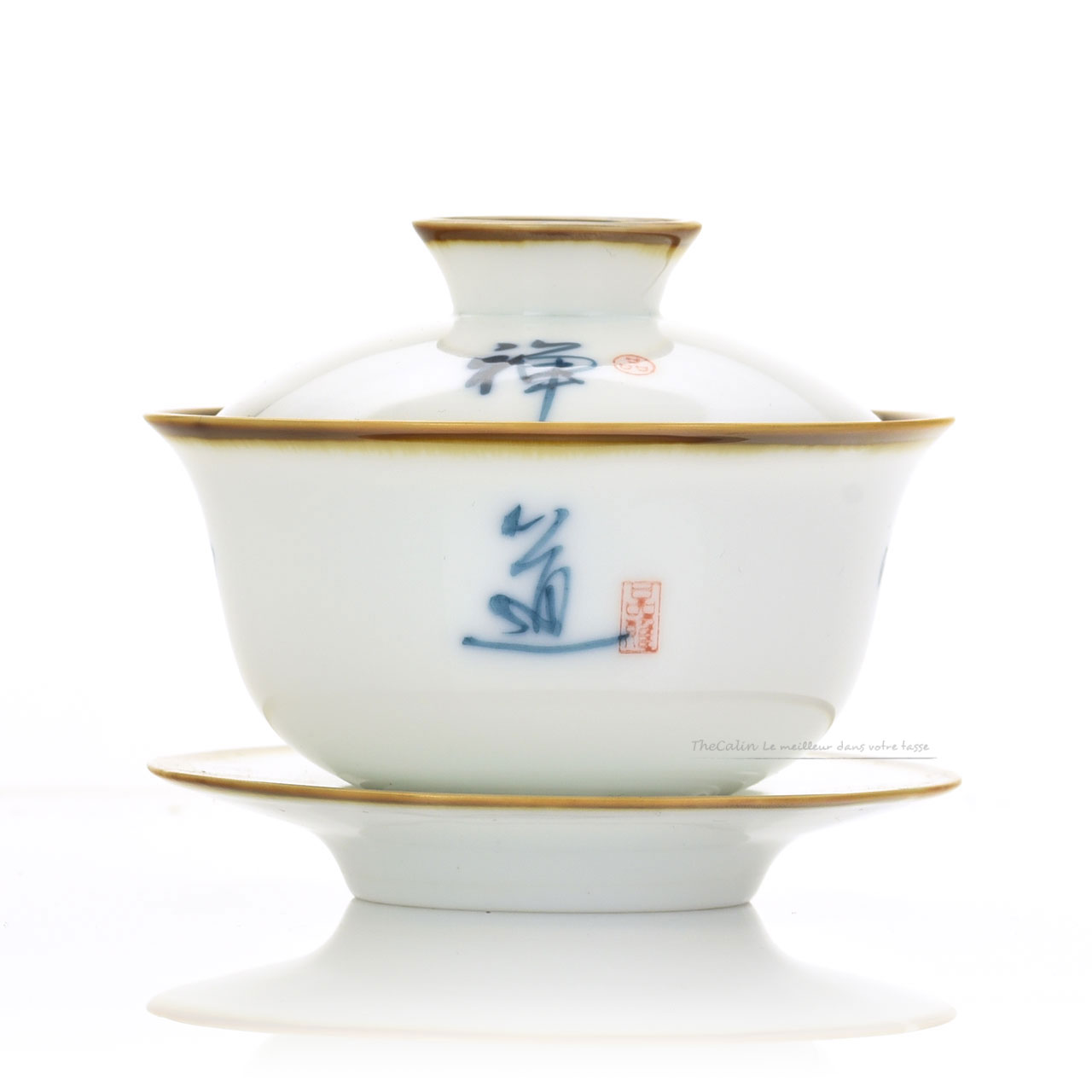
Handwritten Calligraphy Porcelain Gaiwan
3. Black Porcelain Teaware
Jianzhan, also known as Jian ware, is a type of black porcelain tea bowl produced in Jian Kiln, Fujian Province during the Song Dynasty. It is highly praised for its unique dark glaze color and elegant shape, as well as its ability to enhance the taste and aroma of tea. The glaze color of Jianzhan varies from dark brown to black, with a metallic luster and a subtle pattern of oil spots, known as “hare’s fur” or “partridge feather”. It is said that the tea bowl can help to regulate the temperature and flavor of the tea, making it more fragrant and mellow. Today, Jianzhan is still highly valued by tea lovers and collectors, and is regarded as a cultural treasure of Chinese tea culture.
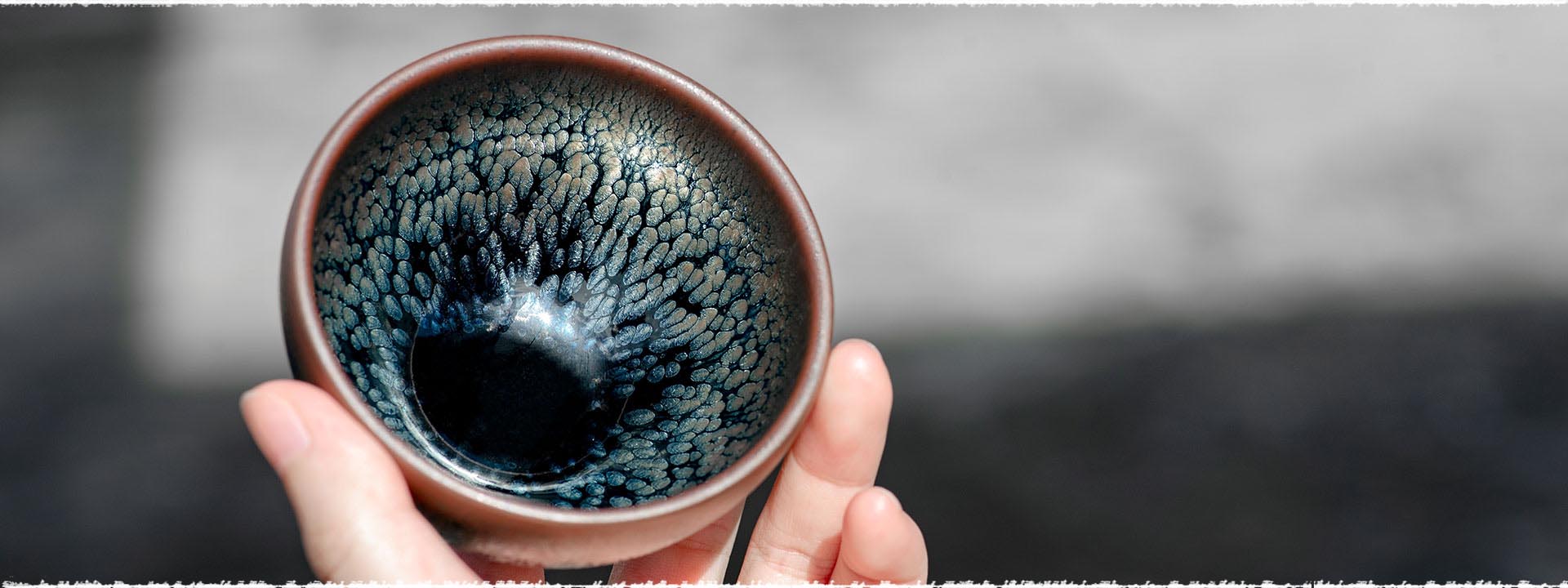
Handmade Jianyang Jianzhan Tea Cup – Oil Spot
4. Colored Porcelain Teaware
Colored porcelain is also known as “painted china”. The painted porcelain on the surface of the utensils is glazed with colored materials, which looks moist and bright, adding to the beauty and charm of the tea set. There are various techniques of colored porcelain, so there are many varieties and colors of colored porcelain tea sets, among which blue and white porcelain tea sets are the most famous. Due to the high level of painting technology of blue and white porcelain tea sets, especially the application of traditional Chinese painting techniques on porcelain, it has been handed down from ancient times to the present and is enduring.
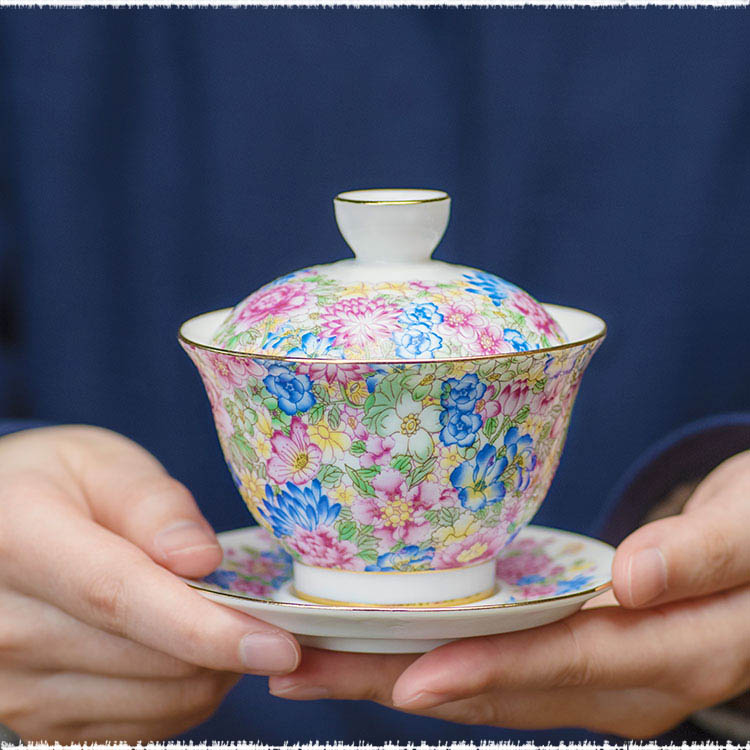
Flowers Blooming Porcelain Gaiwan
5. Linglong Porcelain Teaware
Linglong porcelain, also known as “pierced porcelain”, is a type of porcelain that features intricate openwork patterns carved into the body of the piece. The carvings are filled with glaze before firing, creating a delicate and intricate design that is visible after firing. The name “Linglong” comes from the Chinese words for “exquisite” and “delicate”, which aptly describes the detailed and delicate nature of this type of porcelain. Linglong porcelain has been produced in China since the Tang Dynasty and is still popular today.
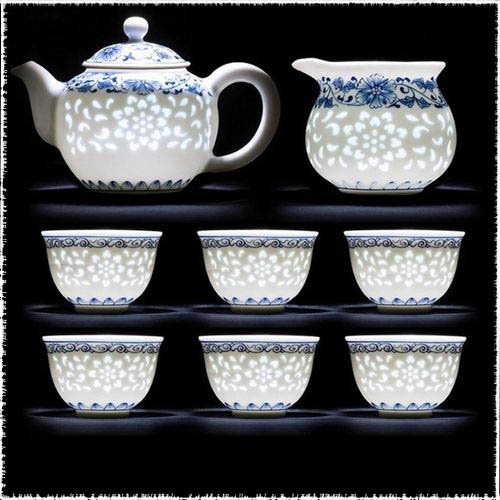

6. Qingbai Porcelain Tea Set
Qingbai porcelain is a type of porcelain that originated in Jingdezhen, China. Qingbai porcelain is also called “yingqing” “影青”、“隐青”、“映青” in Chinese. It refers to a kind of porcelain whose glaze color is between blue and white, white in the blue, and blue in the white.
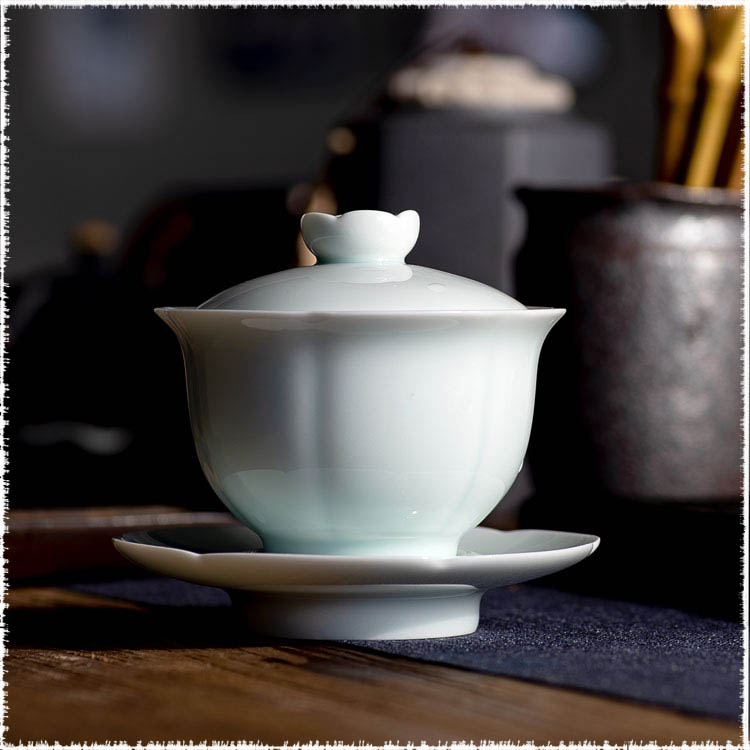
The glaze of Qingbai porcelain is typically translucent and bluish-white, with a subtle blue-green tint. The porcelain body is usually thin and fine, and the glaze has a smooth, glassy texture. Qingbai porcelain is often decorated with carved or incised designs that reveal the white porcelain body beneath the glaze.
During the Song Dynasty, Qingbai porcelain was highly prized for its delicate beauty and was widely used for tea ware, such as tea bowls and cups, as well as for decorative items like vases and figurines. It was also exported to other countries, such as Japan and Southeast Asia.
Today, Qingbai porcelain is still highly valued by collectors and is considered a classic example of Chinese porcelain artistry.
 Exploring the Charms of 2024 Spring Tea Garden with Angel
Exploring the Charms of 2024 Spring Tea Garden with Angel Yingde Black Tea
Yingde Black Tea Matcha vs. Green Tea Powder
Matcha vs. Green Tea Powder

